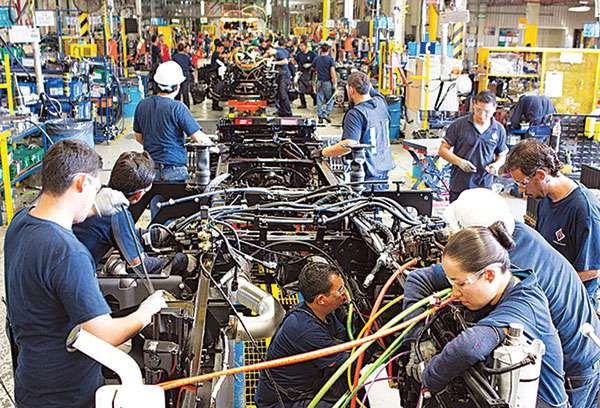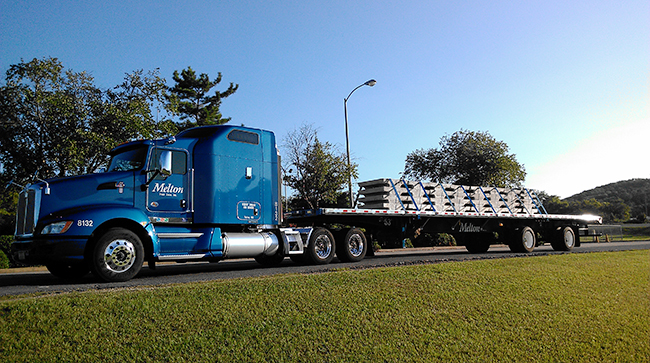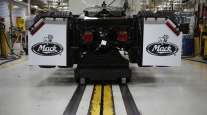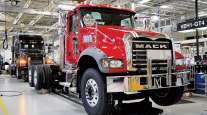Senior Reporter
March Class 8 Orders Post Anticipated Drop With Backlog Extended

North American Class 8 orders in March fell sharply compared with a year earlier amid continuing, but slower, economic and freight growth, and a heavy backlog, analysts said.
ACT Research pegged the preliminary number at 15,700 units, which it will revise later in the month.
That was 66% lower than a year earlier, when orders were 49,600, according to ACT.
“I think the March number was in line with where we see the capability of the market right now,” ACT Vice President Steve Tam said.

Tam
There is little room to slot incoming orders.
“If you look at the second quarter of this year, right now, it’s completely full. There is no room for any orders to be placed then. The third quarter is 85% full. The fourth quarter, before the March orders, was 70% full,” Tam said.
Another analyst said, given that backlog, to expect more of the same with orders.
“Looking ahead, orders are unlikely to materially change in the coming months,” Credit Suisse analyst Jamie Cook wrote in a note.
March was the third consecutive month of orders below 20,000. Research firm FTR reported preliminary orders were 15,200.
“We have a contradiction, right now, but I don’t think it is a huge contradiction,” said Don Ake, FTR’s vice president of commercial vehicles. “The economic data is clearly showing that the economy is slowing. But we are not seeing any of that impact showing up in the truck-equipment market.”
He said the commercial vehicle industry, historically, has positive bias.
“You only look at what you can see in front of you. And what they see is still a good freight market and still a need for more trucks,” he said. “The industry is still catching up with demand. They are still chasing freight and competing for it.”
But Ake said there is no one scoreboard that is telling fleets how much time is left in the game.
“It varies from region to region and company to company,” he said.
FTR forecasts North American Class 8 build will be 342,000 units, up almost 6% from 2018, he said. “We are coming to the peak, to the turning point.”
At the same time, economic activity in the manufacturing sector expanded in March, and the overall economy grew for the 119th consecutive month, according to the nation’s supply executives in the latest Institute for Supply Management Report on Manufacturing Business.

A Melton Truck Lines flatbed. (Melton Truck Lines Inc.)
Melton Truck Lines Inc. Chief Financial Officer Robert Ragan told Transport Topics the carrier has ordered 490 trucks for 2019 and is selling 420. “We are growing. The 70 trucks [represent] a little over 5%.”
Melton ranks No. 92 on the Transport Topics Top 100 list of the largest for-hire carriers in North America. The Tulsa, Okla.-based flatbed carrier, which operates 1,350 Class 8 trucks, is No. 10 on the TT list of the largest flatbed and heavy specialized carriers.
“Regardless of the cycle, we have always tried to grow slow and steady,” Ragan said.
Melton benefits from a diverse customer base, he added. “Our largest customer is 4.5% of revenue. So when you spread out, and lack concentration risk, it is easier to continue to grow your business.”
Some of Melton’s customers are beginning to move supplies needed to extend the wall along the U.S. border with Mexico, said Brice Peters, Melton’s vice president of sales. “That’s the big project out there.”
But a discussion on a national package of broader infrastructure spending is building in Congress and the While House, too, according to reports.
“We’re ready to talk, you know. We’re ready to talk to see where we can find our priorities,” Speaker of the House Nancy Pelosi said at a recent event that Politico hosted in Washington. “This issue has never been a partisan issue.”
About 75% of the conversations she has had with President Donald Trump have included infrastructure policy to some extent, Pelosi said.
Up until the second half of 2018, the construction market has been reasonably strong, Tam said.
“So I have to think a lot of that equipment that would be employed in any new programs or projects that get approved, the vast majority of it is probably already sitting out in the fleets at this point,” he said. “So I don’t think [an infrastructure bill] would spur much in the form of incremental demand [for new trucks]. It would be nice, but I’m not holding out hope on that.”




